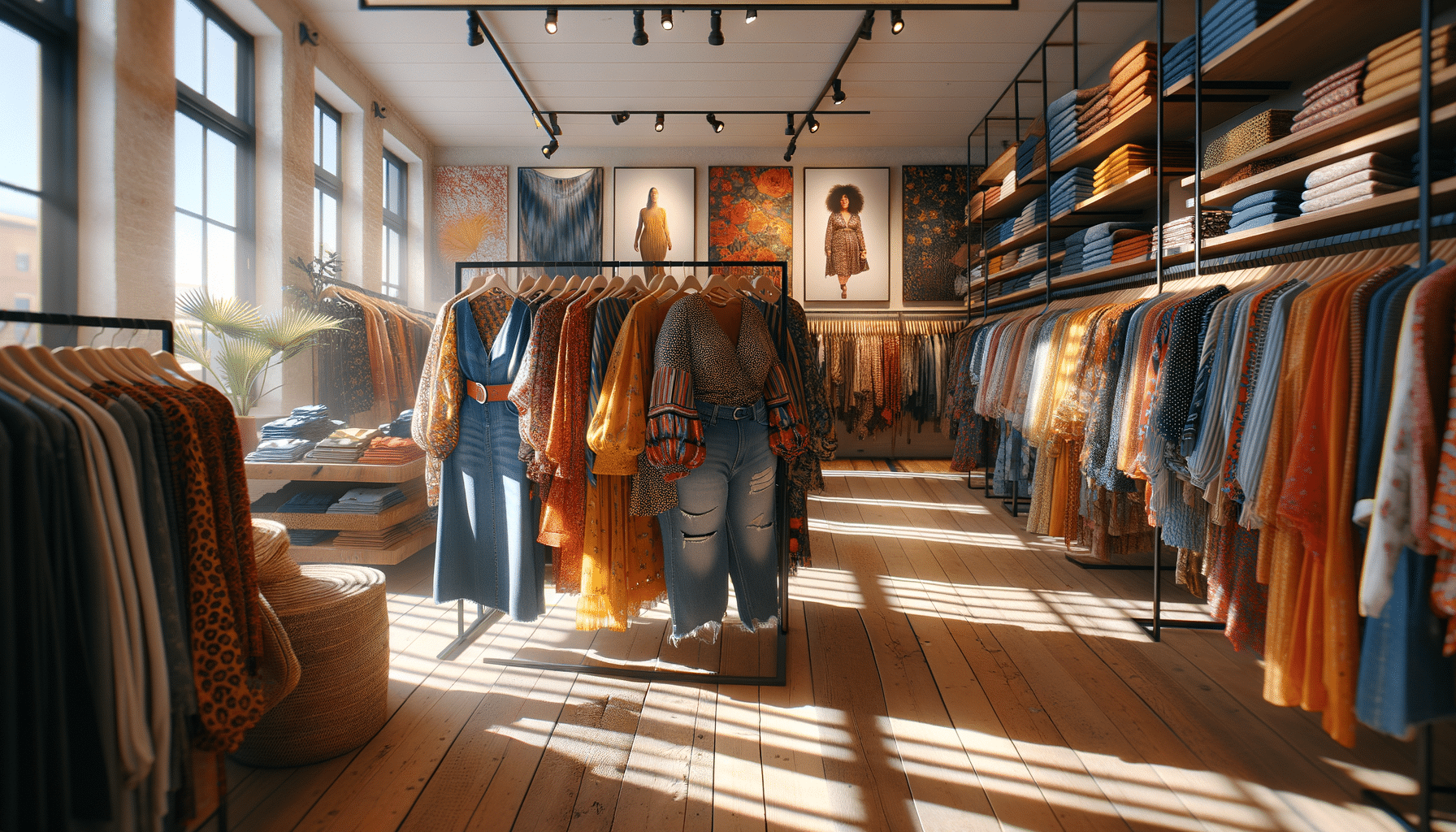
Plus Size Fashion Full Guide, Learn More About It
The Evolution of Plus Size Fashion
Plus size fashion has undergone a significant transformation over the years, evolving from a niche market to a thriving industry that celebrates diversity and inclusivity. Historically, the fashion industry has been criticized for its limited representation of body sizes. However, in recent years, there has been a notable shift towards embracing a wider range of body types. This change has been driven by the increasing demand for clothing that caters to all body shapes and sizes, as well as a growing awareness of the importance of body positivity.
One of the key factors contributing to this evolution is the rise of social media platforms, where influencers and everyday individuals alike have championed the cause of body inclusivity. These platforms have provided a space for plus size individuals to share their fashion choices, style tips, and personal stories, which has helped to normalize and celebrate larger body sizes. Additionally, fashion brands have started to recognize the lucrative potential of the plus size market, leading to more diverse and fashionable offerings.
Moreover, the fashion industry has seen an influx of designers who specialize in creating stylish and flattering clothing for plus size individuals. These designers focus on innovative cuts, quality fabrics, and trendy designs that cater specifically to the needs of their clientele. This has resulted in a more inclusive fashion landscape, where consumers can find clothing that not only fits well but also reflects their personal style.
Understanding Plus Size Sizing and Fit
One of the challenges in plus size fashion is navigating the sizing and fit of garments. Unlike standard sizing, which typically ranges from small to large, plus sizes often start from size 14 and can go up to size 40 or beyond. However, sizing can vary significantly between brands, making it essential for consumers to understand their measurements and the specific sizing charts of different labels.
When it comes to fit, plus size clothing needs to accommodate various body shapes, including pear, apple, hourglass, and rectangle. This means that designers must consider factors such as bust size, waist definition, and hip measurements when creating garments. Tailoring and adjustable features, such as elastic waistbands and adjustable straps, are also crucial in ensuring a comfortable and flattering fit.
Additionally, the choice of fabric plays a vital role in the fit of plus size clothing. Stretchable materials like spandex and jersey are popular choices, as they offer flexibility and comfort. However, structured fabrics like denim and cotton can also be flattering when designed with the right cuts and details. Understanding the nuances of sizing and fit can empower plus size individuals to make informed fashion choices that enhance their confidence and style.
Trends in Plus Size Fashion
Plus size fashion is not immune to trends, and in recent years, there have been several noteworthy styles that have gained popularity. One of the most significant trends is the emphasis on bold prints and vibrant colors. Gone are the days when plus size clothing was limited to dark and muted tones. Today, fashion-forward individuals are embracing florals, geometric patterns, and bright hues that make a statement.
Another trend is the rise of athleisure and casual wear, which has become a staple in many wardrobes. Comfortable yet stylish pieces such as leggings, oversized sweaters, and joggers are highly sought after for their versatility and ease of wear. This trend reflects a broader shift towards prioritizing comfort without compromising on style.
Furthermore, the demand for sustainable and ethically produced fashion has permeated the plus size market. Consumers are increasingly conscious of the environmental impact of their clothing choices and are seeking out brands that prioritize eco-friendly practices. This has led to a surge in the availability of sustainable plus size clothing, made from organic materials and produced through ethical supply chains.
Shopping Tips for Plus Size Fashion
Shopping for plus size fashion can be an enjoyable experience with the right approach. Here are some tips to help navigate the process:
- Research Brands: Look for brands that specialize in plus size clothing and have a reputation for quality and style. Online reviews and social media can be valuable resources for finding trusted labels.
- Know Your Measurements: Accurate measurements are key to finding the right fit. Take note of your bust, waist, and hip measurements, and compare them to sizing charts provided by retailers.
- Embrace Tailoring: If you find a piece you love but it doesn’t fit perfectly, consider investing in tailoring. A few adjustments can make a significant difference in how a garment looks and feels.
- Experiment with Styles: Don’t be afraid to try new styles and silhouettes. Fashion is about self-expression, so explore different cuts, colors, and patterns to find what resonates with you.
- Prioritize Comfort: While style is important, comfort should not be compromised. Choose fabrics and designs that allow for ease of movement and make you feel confident.
By following these tips, plus size shoppers can enhance their wardrobe with pieces that are both fashionable and functional, allowing them to express their unique style with confidence.
The Future of Plus Size Fashion
The future of plus size fashion looks promising, with the industry continuing to expand and innovate. As consumers increasingly demand inclusivity, more brands are expected to broaden their size ranges and offer diverse collections. This shift is likely to result in greater representation of plus size individuals in fashion campaigns, runway shows, and media.
Technological advancements are also set to play a role in the evolution of plus size fashion. Virtual fitting rooms and augmented reality tools are becoming more prevalent, allowing consumers to try on clothes digitally before making a purchase. This technology can help bridge the gap between online shopping and the need for accurate sizing and fit.
Moreover, the advocacy for body positivity and self-acceptance is expected to continue influencing the industry. By promoting a culture of inclusivity and celebrating all body types, plus size fashion can empower individuals to embrace their uniqueness and express themselves authentically through their clothing choices.
In conclusion, the plus size fashion industry is poised for continued growth and transformation. By prioritizing inclusivity, embracing technological innovations, and championing body positivity, the future of plus size fashion holds immense potential for creativity and diversity.


